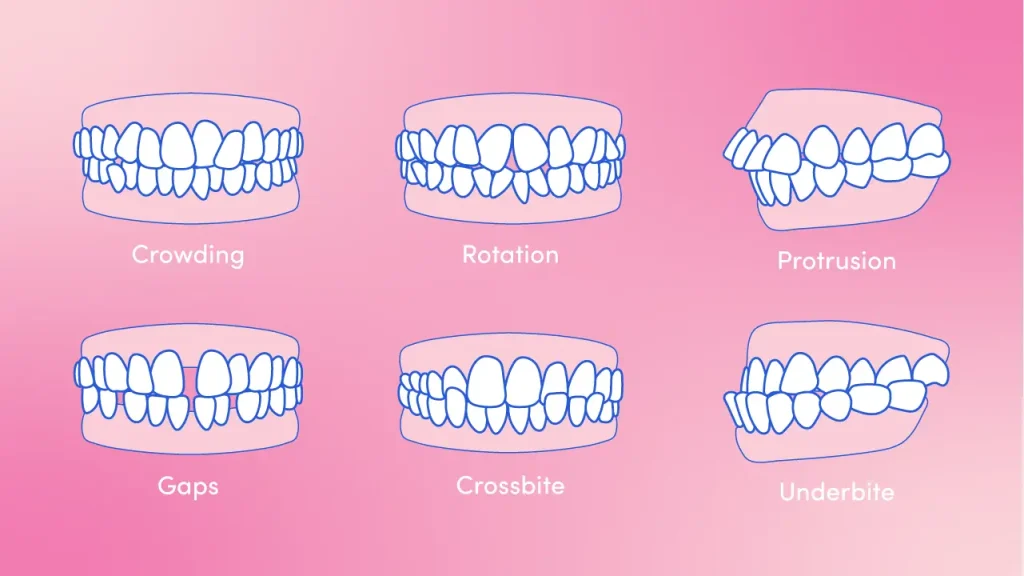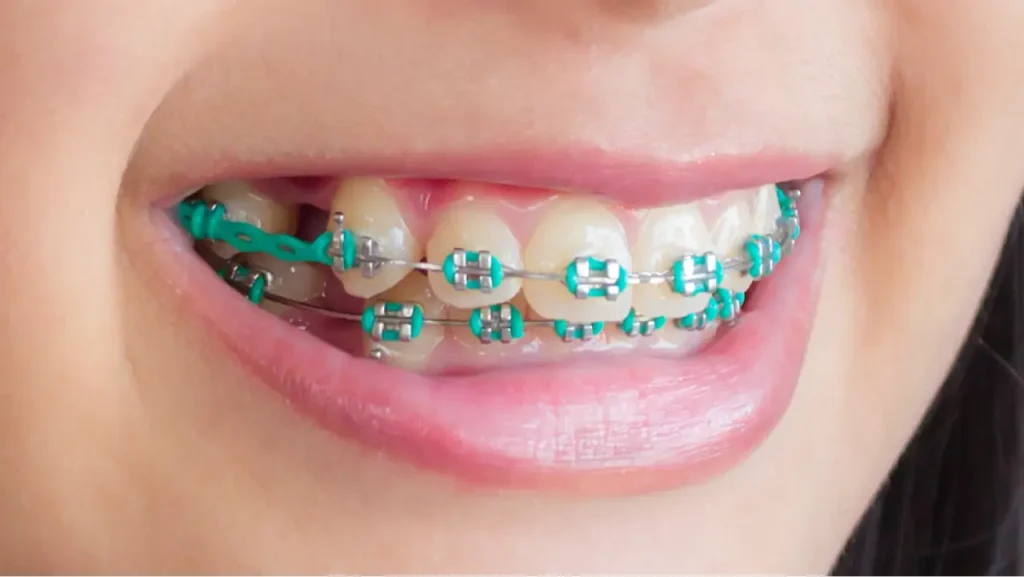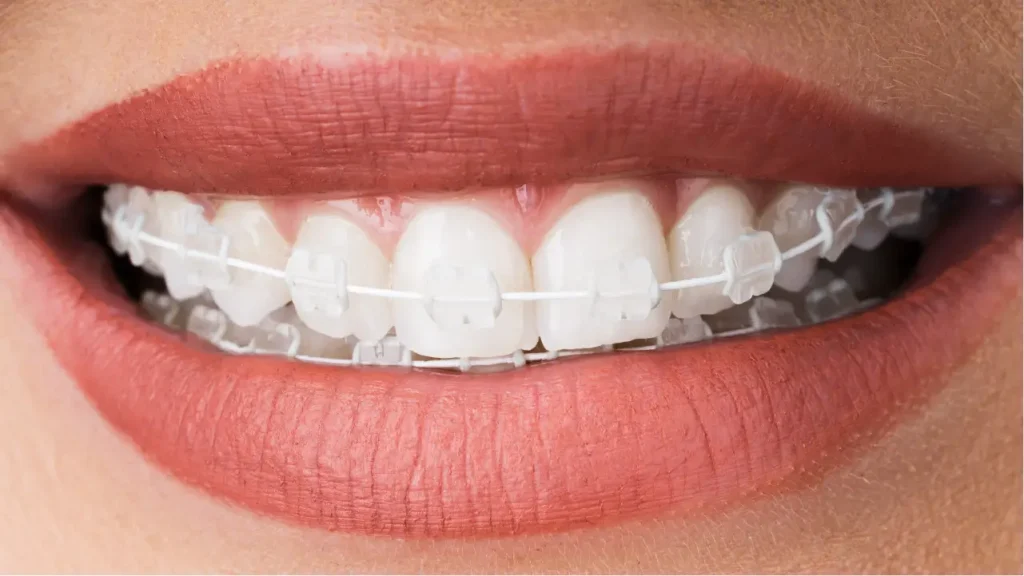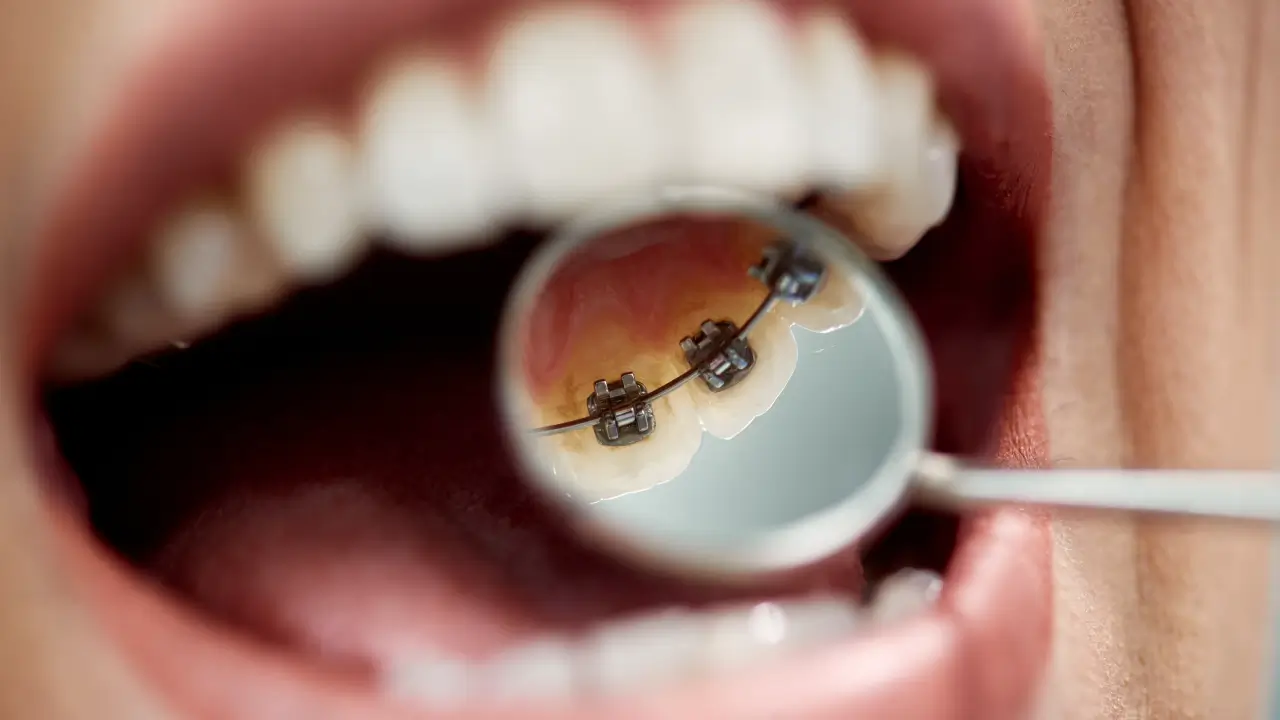Ever heard of lingual braces or come across them while exploring your orthodontic options? In this blog, we’re going to cover everything you need to know about these discreet braces—from how they work and what to expect during treatment, to comparing them with other types of braces. Let’s dive in and see if lingual braces could be the right choice for you!
What are lingual braces?
Lingual braces are a type of orthodontic treatment where the brackets and wires are placed on the inner side of your teeth, facing your tongue. This clever placement makes them a discreet option, so you can straighten your teeth without people noticing.
Conditions that can be treated by lingual braces

Lingual braces can treat a wide range of malocclusions, just like traditional braces, including:
- Crowded teeth: Aligning overlapping or closely packed teeth
- Gaps between teeth: Closing spaces between teeth for a more uniform smile
- Misaligned bites: Correcting overbites, underbites, and crossbites for improved jaw alignment
- Rotated or twisted teeth: Straightening teeth that are not properly aligned within the dental arch
- Complex dental issues: Ideal for cases that require precise and detailed adjustments
How do lingual braces straighten teeth?
Lingual braces work similarly to traditional braces, but instead of being attached to the front of your teeth, they’re placed on the inner surfaces, facing your tongue. Here’s a general overview of how they work:
- Custom brackets and wires:
First, your orthodontist will take precise impressions of your teeth to create custom brackets and wires that fit the contours of your inner teeth. These custom brackets are key to ensuring that the braces are both effective and comfortable. - Bonding the brackets:
Once your custom brackets are ready, they are carefully bonded to the back of your teeth. Because they’re on the inner side, they remain hidden when you smile, giving you the benefit of discreet treatment. - Applying gentle pressure:
Just like with traditional braces, the wires connected to the brackets apply continuous, gentle pressure to move your teeth into their desired positions. Over time, this pressure gradually shifts your teeth, correcting misalignments and improving your bite. - Adjustments and tightening:
Every few weeks, you’ll visit your orthodontist for adjustments. These appointments are crucial as they allow the orthodontist to tighten the wires and ensure that your teeth are moving correctly. The process is ongoing, with each adjustment bringing your teeth closer to their ideal alignment.
Pros and cons of lingual braces
Like any orthodontic treatment, lingual braces come with their own set of advantages and challenges. o help you decide if lingual braces are the right choice for you, here’s a breakdown of their pros and cons:
Pros of lingual braces
- Discreet appearance: Lingual braces are hidden behind your teeth, making them barely noticeable to others.
- Custom fit: Each bracket is custom-made to fit the contours of your teeth, ensuring a comfortable fit.
- Effective for complex cases: They can treat a wide range of orthodontic issues, including complex cases that require precise adjustments.
- No visible metal: Unlike traditional braces, there’s no visible metal, allowing you to smile confidently throughout your treatment.
Cons of lingual braces
- Initial discomfort: The inner placement of the braces can cause tongue irritation and discomfort, especially when eating or speaking.
- Speech challenges: Some patients experience a temporary lisp or speech difficulties during the adjustment period.
- Difficult to clean: Maintaining oral hygiene can be more challenging, as food particles can easily get trapped around the brackets and wires.
- Higher cost: Lingual braces are often more expensive than traditional braces due to their custom design and the specialized care they require.
- Longer adjustment period: It may take longer to adapt to lingual braces compared to other types, particularly in terms of comfort and speech.
Comparing lingual braces with other types
When considering orthodontic options, it’s helpful to compare lingual braces with other types to determine which might best suit your needs. Here’s a look at how lingual braces stack up against other options.
Lingual braces vs invisible braces

When choosing between lingual braces and invisible braces, it’s important to consider how each option offers a discreet approach to teeth straightening, with differences in comfort, maintenance, and overall experience.
Lingual braces | Invisible braces | |
Appearance | Positioned on the inner side of your teeth, making them discreetly concealed. | Designed to be virtually invisible when worn, providing a seamless look. |
Effectiveness | Effective for a wide range of cases. | Effective for most cases. |
Comfort | Can initially cause discomfort and tongue irritation; eating and speaking may take some getting used to. | Generally more comfortable, as they don’t have brackets or wires. They are smooth and can be removed for eating and cleaning. |
Cleaning | Fixed in place, so they require careful cleaning around the brackets and wires. | Removable, allowing for easy cleaning and eating without restrictions. |
Adjustment period | May have a longer adjustment period for speech and comfort. | Typically involve a shorter adjustment period as they are less intrusive. |
Office visits and adjustments | Require regular visits for adjustments and maintenance. | Often require fewer office visits, as aligners are changed at home according to a planned schedule. |
Teeth alignment with Zenyum Invisible Braces

If you’re looking for a discreet orthodontic option that delivers many of the same benefits as lingual braces, give Zenyum Invisible Braces a try. Zenyum Invisible Braces combines the invisibility and effectiveness you’re looking for with added comfort and convenience. It’s designed to be virtually invisible, removable for easy cleaning, and often requires fewer office visits.
Explore how Zenyum Invisible Braces could be the right solution for achieving the smile you want with less hassle in just five minutes with our complimentary Smile Check.
Lingual braces vs metal braces

Lingual braces and metal braces both provide effective teeth alignment, but they differ significantly in terms of visibility and comfort, making your choice dependent on your priorities.
Lingual braces | Metal braces | |
Appearance | Discreetly concealed on the inner side of teeth. | Visible metal brackets and wires on the front of teeth. |
Effectiveness | Effective for a wide range of cases. | Effective for most cases. |
Comfort | May cause initial discomfort and tongue irritation. | Generally more comfortable, but visible. |
Cleaning | More challenging to clean, food particles can get trapped. | Easier to clean, but still requires diligent oral hygiene. |
Adjustment period | Longer adjustment period for comfort and speech. | Shorter adjustment period, less impact on speech. |
Office visits and adjustments | Requires regular visits for adjustments. | Requires regular visits for adjustments. |
Lingual braces vs ceramic braces

Both lingual and ceramic braces are less noticeable than traditional metal braces, but they differ in placement and appearance, offering different benefits based on your aesthetic preferences.
Lingual braces | Ceramic braces | |
Appearance | Discreetly concealed on the inner side of teeth. | Less visible than metal, but still noticeable on the front. |
Effectiveness | Effective for a wide range of cases. | Suitable for most cases. |
Comfort | May cause initial discomfort and tongue irritation. | Typically more comfortable than metal. |
Cleaning | More challenging to clean, food particles can get trapped. | Easier to clean compared to lingual braces |
Adjustment period | Longer adjustment period for comfort and speech | Shorter adjustment period, less impact on speech |
Office visits and adjustments | Requires regular visits for adjustments | Requires regular visits for adjustments |
Cost of lingual braces in Singapore
When considering braces, it’s important to understand the costs associated with each type. Here’s a brief overview of the average prices for various braces options in Singapore. This comparison can help you make an informed decision based on your budget and treatment needs.
Type of braces | Price |
Lingual braces | Usually between $8,000 – $11,000* |
Metal braces | Usually between $3,500 – $4,200* |
Ceramic braces | Usually between $5,000 – $6,000* |
Invisible braces (clear aligners) | Usually between $3,000 – $8,000* |
$2,790 – $5,090 |
*The listed prices are meant to be taken as a guide at the time of publication. Prices may be subject to prevailing GST and service charge (if any).
Finding the best fit: lingual braces and alternatives
Choosing the right braces can significantly impact your orthodontic journey, from comfort and appearance to effectiveness and cost. Lingual braces offer a discreet solution for a wide range of cases, while invisible braces provide a nearly invisible option with the convenience of removability. Each type has its own set of benefits and considerations, so it’s essential to weigh these factors based on your specific needs and preferences.
If you’re looking for a blend of discretion and effectiveness, Zenyum Invisible Braces might be an excellent choice. Offering a practically invisible appearance, comfort, and ease of maintenance, Zenyum can be a fantastic alternative to traditional braces.
Ready to explore your options? Start with our free Smile Check and discover how Zenyum Invisible Braces can help you achieve the smile you’ve always wanted. Your dream smile is just a step away!

Discover a discreet alternative: Zenyum Invisible Braces
Enjoy all the benefits with added comfort and convenience




